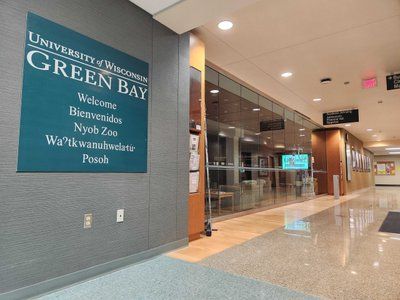Everyone
knows the University of Wisconsin-Madison doesn’t do much to work with
companies and institutions in Milwaukee, and its relationship with UW-Milwaukee
is practically nonexistent. Right?
Wrong.
This
urban myth has endured for reasons that defy accuracy, sometimes kept alive by
those who prefer to perpetuate the image of two cities divided by 85 miles of
interstate highway and generations of cultural mistrust.
An
emerging proposal involving UW-Madison, UWM and a variety of industry partners
is the latest example of how the state’s largest cities are finding ways to
work together in a competitive world that doesn’t care about geographic borders
— global or municipal.
Read this column in the Milwaukee Journal Sentinel here.
The
state’s two largest campuses are driving a public-private plan to enhance the
state’s “energy, power and controls” industry, a sector that includes
some of Wisconsin’s largest companies. If the plan takes root, it would boost
employment and exports beyond levels that are already impressive, and help to
position Wisconsin as a “clean energy” innovation leader.
The
proposal calls for launching an Advanced Energy Systems Center, based in
Milwaukee, to help tap into a global clean energy market that is predicted to
grow by nearly $2 trillion in coming years.
The
center would accelerate research around distributed generation and microgrids,
energy storage and energy efficiency, all of which are linked to the growing
issue of energy security. It also would find ways to more seamlessly transfer
that research to industry, and help build a workforce that can sustain the
sector in Wisconsin amid a coming wave of baby boomer retirements.
The
list of industry partners represents a who’s who of the energy, power and
controls sector in Wisconsin, with companies such as ABB, DRS Technologies,
Eaton, GE Healthcare, Johnson Controls, Odyne, Rockwell Automation and We
Energies.
It
also includes the Midwest Energy Research Consortium, which has identified
900-plus energy sector companies in Wisconsin that collectively employ more
than 100,000 people and generate more than $38 billion in annual revenue. The
consortium has helped draw in other partners in fields such as workforce
development and security research.
What’s
the size of the opportunity? Electrical equipment is already the single-largest
manufacturing sector in Wisconsin, accounting for more than $2.7 billion in
gross state product in 2011.
The
Advanced Energy Economy Institute predicted in 2012 that world clean energy
markets will grow by $1.9 trillion over five years, and a separate report by
the political Economy Research Institute predicted Wisconsin could see a net
increase of $2.8 billion in investment revenue and 35,000 new jobs through
clean energy growth.
There
are challenges, however. A survey by the Center for Energy Workforce
Development predicted that 62% of all energy, power and control industry
workers will leave their jobs in the next decade, primarily because of
retirements. While state educational institutions are gearing up to meet the
demand, the state cannot afford to be caught short on talent.
The
Advanced Energy Systems Center will help through development of professional
certificate programs, short courses, seminars and retraining of professionals
who may already have engineering skills but who lack the latest tools. Much of
this training would take place in hands-on laboratories and accelerators.
The
secret sauce behind the proposal — priced at $7.9 million in late 2013 — is the
enthusiastic level of collaboration.
“Wisconsin
must promote an energy technology innovation agenda to stay competitive, and
this proposal can be a catalyst for global leadership by building off the
strength of private-sector partners and leading research and education
universities,” said Michael Corradini, director of the Wisconsin Energy
Institute at UW-Madison.
UWM
Chancellor Mike Lovell, whose engineering background has helped the campus
build important partnerships with industry, said the project “has the
potential to be the most comprehensive effort to date between the two
campuses.”
With
the right amount of state support, Lovell said, the project could build upon
the resources of academia and industry in a way that would help an already innovative
sector become more so.
“Energy,
power and controls has been a core industry in Wisconsin for 100 years or
more,” Lovell added, “and it’s still considered one of the most dense
regions for that sector in the country, if not the world. This will build on a
longstanding strength.”
Partnerships
between UW-Madison and UWM have quietly taken place for years, often around
joint research, continuing education, technology licensing, industry consortia
and more. If this proposal powers up, however, it could dispel the myth that
Milwaukee and Madison are separated by more than just 90 minutes of drive time.





